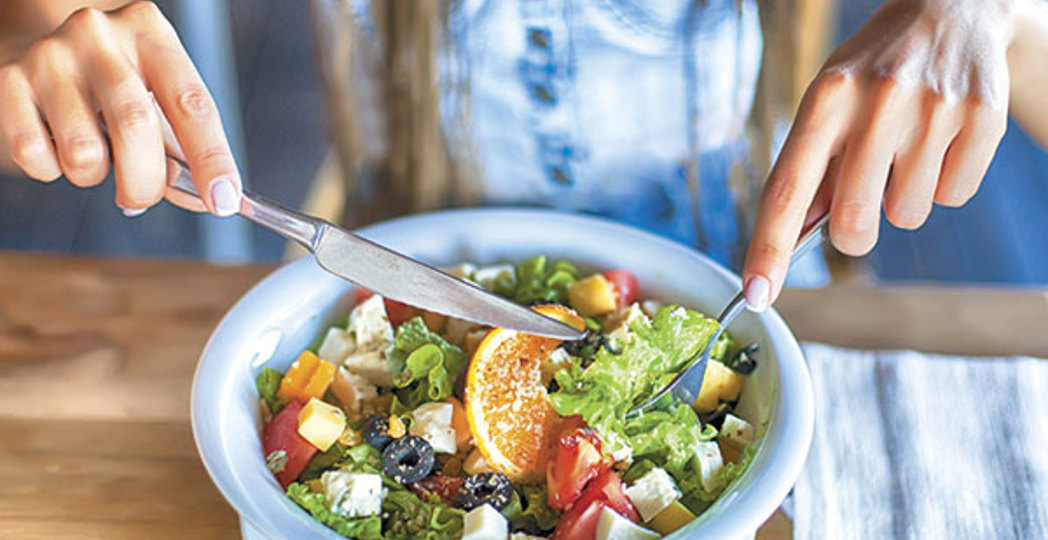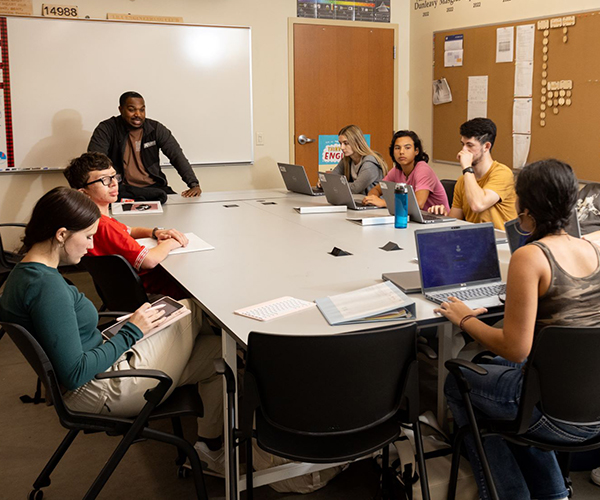You Won't Believe What School Lunches Look Like These Days
by Kristen Hampshire | Mar. 13, 2018 | 5:00 PM

It was like Top Chef for the cafeteria crowd.
Led by Shaker Heights Schools food service director Amanda Schindley and her colleague Christopher Crist, third-graders at Onaway Elementary School created a list of items they wanted in the cafeteria. Then Schindley and her team prepared a taste test to determine the students’ favorite dishes.
“They are the ones who are eating,” says Schindley. “So we talk to them and get their feedback.”
Shaker students gave cucumber slices a thumbs-up and picked mandarin oranges over their full-sized cousins, based on a student survey. “Little things like this have helped us come up with a menu that will get kids to eat versus wasting food,” Schindley says.
The menu includes surprises such as an edamame and cucumber salad marinated in Italian dressing, and a green- and garbanzo-bean salad. “My job is to get the kids to eat healthy foods, and to introduce them to new foods,” Schindley says.
Creating a healthy, tasty school menu that meets requirements set by the National School Lunch Program is no easy feat. Shaker Heights Food Services considers food trends, dietary needs and preferences, allergens and — let’s not forget — the fun factor. That’s what prompted the conversion of a high school snack stand that sold a la carte burgers into Agave, a Chipotle-style concept where students can special order made-from-scratch rice bowls, wraps and salads.
“It’s something different we’ve done to bring excitement to school lunch,” Schindley says. “We realized we could utilize that grab-and-go station in a better way by offering food that kids like.”
Indeed, lifestyle and dietary changes have forced the modern school lunch to evolve. Four of every 100 students have a food allergy, according to the National Center for Health Statistics data. Many more have intolerances and different dietary lifestyles, from gluten-free to vegan and vegetarian.
According to Nona Evans, executive director of the Whole Kids Foundation, Generation Z (those born between 1995 and 2012) is going to be the first foodie generation in 50 years.
“One of the things we have seen is a growing understanding that when we provide healthy choices for our kids, our kids make healthy choices,” says Evans. ”If they have a rainbow of fresh, healthy vegetables on a salad bar, stand back and watch — they’ll get curious and try things they haven’t tried before.”
So increasingly, schools are offering made-to-order salad bars that empower kids to make healthy food choices.
“It’s all about choice,” says, Chris Burkhardt, executive director of school nutrition for the Cleveland Metropolitan School District, which serves about 32,000 lunches every day. “When students are hungry, they are not going to be productive in the classroom. We have to make sure we set them up for success.”
Building a food philosophy
At Hathaway Brown School, the cafeteria is a learning environment similar to any classroom.
“What we are really attacking this year is how our curriculum supports our food philosophy,” says Kristin Kuhn, director of admissions for Hathaway Brown’s infant and toddler center and primary school.
So the Shaker Heights all-girls school is serving more nutrient-dense meals and snacks, including more whole fruits, vegetables and grains. There’s also a greater emphasis on sustainability by cracking down on waste and creating a communal and diverse approach to its offerings.
Kuhn and her two daughters, ages 5 and 8, are vegetarian. She has experienced how a food philosophy at school raises awareness and creates opportunities to include new foods.
“As a parent, I feel really supported,” Kuhn says, pointing to the cafeteria’s Buddha bowl, a mix of whole grains, protein and vegetables, and a salad bar that has whole grains high in protein such as quinoa or farro, roasted vegetables and hummus. “It has been fun sharing what we do at home and seeing that at the school salad bar.”
Similarly, setting food priorities at school creates a foundation for building healthy eating.
At CMSD, meals are designed to be hand-held, customizable and flavorful. Each dish should meet at least two of those requirements. So students are seeing more customizable sandwiches, wraps and grab-and-go options on the breakfast and lunch menus.
“We want to make sure we are meeting the needs of our students,” Burkhardt says. “We don’t want meals to be cookie-cutter.”
Going farm to tray
More schools are doing their part to ensure the freshest possible ingredients are served to their students.
At Hathaway Brown, for example, an herb and vegetable garden provides some fresh staples for the school’s kitchen.
A learning garden in Shaker Heights High School’s courtyard delivers a bounty of potatoes, beets and greens that appear on the menu.
“So many schools now have gardens and greenhouses,” says Kuhn. “We’ve had a herb garden for a long time, and in the past five to 10 years, we’ve built smaller gardens for our younger children and larger beds that the older students maintain.”
Stocking a salad bar
Salad bars are the ultimate answer to food allergies, intolerances and special diets, Evans says.
The Whole Kids Foundation, a nonprofit founded by Whole Foods Market to support schools and inspire families to improve children’s nutrition and wellness, offers grants so schools can build salad bars with proper equipment, training and recipes.
“Salad bars offer the highest return on investment,” Evans says. “When there’s a salad bar at school, kids will eat three times the fruits and veggies as when there is not one. The transformation is amazing.”
Not to mention, positive peer pressure inspires kids to try new foods. “I can’t tell you the number of kids who say, ‘I didn’t like broccoli when mom gave it to me, but my best friend tried it on the salad bar and so did I.’ ” says Evans.
A bar setup can be themed, like Shaker Heights High School’s Agave concept, or it can include specialty items, such as University School’s varietal hummus made with butternut squash, sweet potato or black beans.
Teaching foodies
“Everything we do in life revolves around food — celebrations, business meetings, outings,” says Valerie Scruggs, University School’s director of food services. “So, knowing about how food is prepared and where it comes from is important.”
Taking nutrition into the classroom connects students to what the cafeteria is serving and helps promote healthy habits outside of school.
“The fresh fruits and vegetables we offer during the day are often the only ones they will get,” Burkhardt says, “especially if a family is on a fixed income.”
Through CMSD’s fresh fruit and vegetable program, teachers help introduce new foods, so students taste and learn. “We talk about where it comes from, where it is grown and how much it weighs,” says Burkhardt. “We’re talking about produce students have never seen like dragon fruit.”
Teachers set the tone for healthy eating, Evans adds. She advises teachers to pick one good habit to adopt as motivation for students. Evans recalls a teacher who brought a green smoothie to school for breakfast every day. At the end of the year, a student said to her, “I used to think I didn’t like to eat green things. But I saw you drinking that and I tried it, and now I have one for breakfast in the morning.”
“Our kids are smart,” Evans remarks. “Nothing gets by them.”
Taste-testing and flavor stations
Marketing new meals to students encourages them to try new things. “A lot of districts in Ohio are doing taste testings, so kids try different products,” says Stacey Bettis, president of the School Nutrition Association of Ohio. Mini food shows, such as the one at Onaway Elementary, can also engage students in healthy eating at school.
To complement that new range of options, flavor stations are being implemented at CMSD with salt-free shakers filled with various seasonings and a range of sauces such as sweet and sour and garlic.
“Students can take their food up a notch, add some bold flavor,” Burkhardt says. “This has gone over really well with parents and students, because it does not hinder the nutritional aspect of food, and it gives students more choice on how they can customize their meals.”
More breakfast, please
Breakfast is gaining popularity at schools across the country, especially at the elementary level. To make breakfast more portable, schools are providing hand-held options such as breakfast sandwiches, bars and cereals. “It’s important that they can take nutrition with them to class,” Burkhardt says.
Bettis sees a demand for breakfast increasing statewide. “I believe breakfast is also helping with school attendance,” she says. “It contributes to better performance, test scores and fewer behavioral problems.”
Universal breakfast programs where all students are served the first meal of the day are taking hold in schools across the country, Evans says. “It removes the stigma of who eats at school because they can’t afford to otherwise,” she says.
Overall, mealtime at school should be a positive experience, Bettis says. “Coming to school can be stressful sometimes, and we want students to walk through the line and feel like they are the No. 1 customer,” she says. “We want it to be positive — something they can enjoy in their day.”
Trending
-
1
-
2
-
3
-
4
-
5










